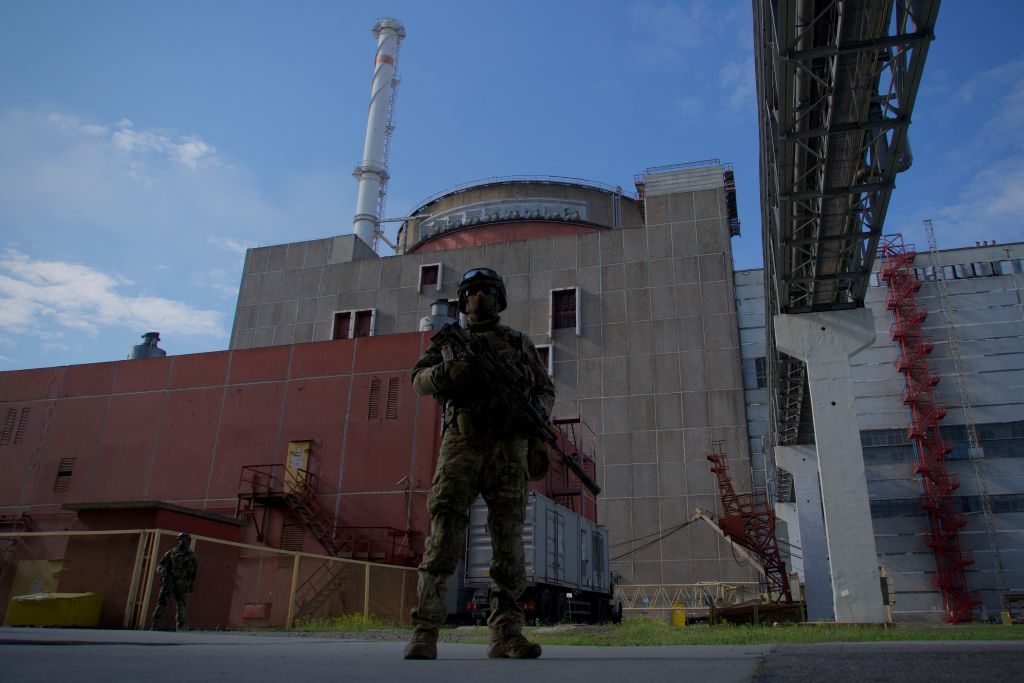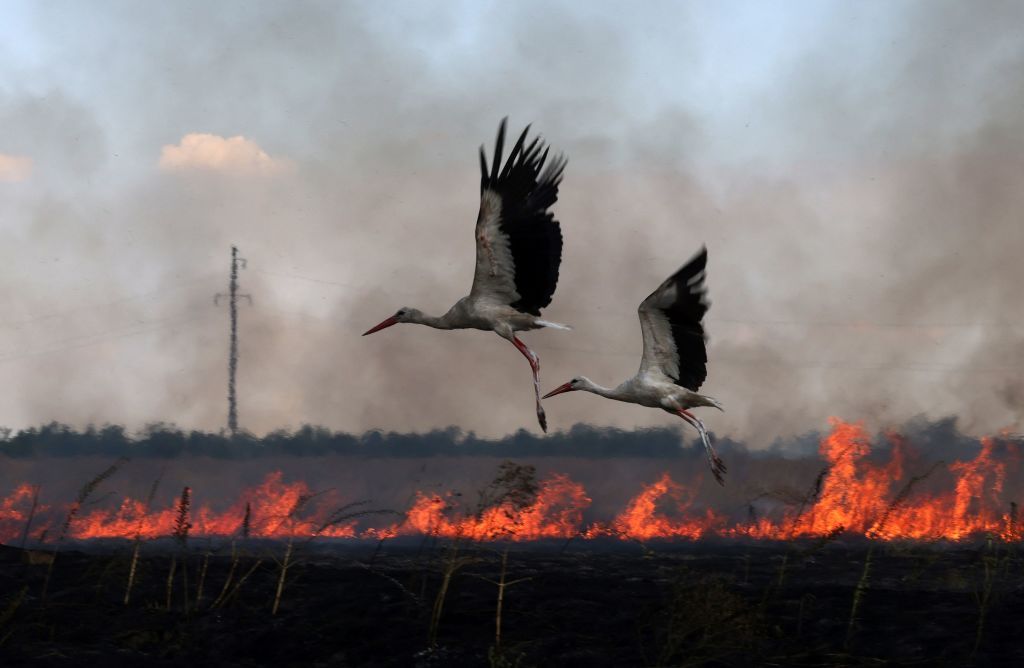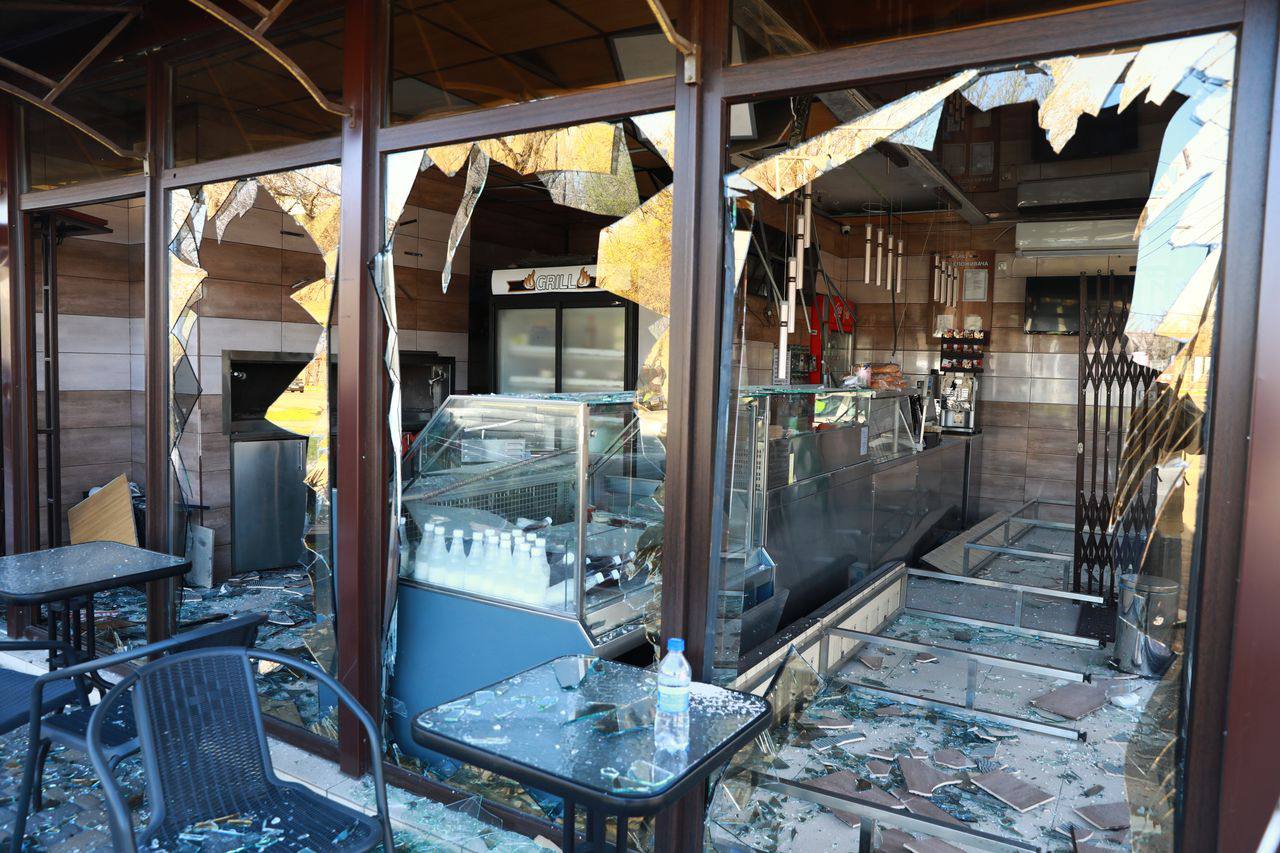Ukraine war latest: Russian missile ship set on fire near Kaliningrad, Ukraine's intelligence claims

Key developments on April 8:
- Russian missile ship set on fire near Kaliningrad, Ukraine's intelligence claims
- IAEA confirms 3 direct strikes on main reactor containment structures of Zaporizhzhia Nuclear Power Plant
- The Economist: Russian attacks aim to make Kharkiv uninhabitable for civilians
- Media: Russia destroys over 60,000 hectares of Ukrainian forests
- Russian attack on industrial facility in Zaporizhzhia kills 3, injures 8.
The Russian missile ship Serpukhov, which was docked off the exclave of Kaliningrad on the Baltic Sea, was set on fire on April 8, Ukraine's military intelligence claimed.
In a post on Telegram, the agency said that the fire had "disabled" the ship and that "its means of communication and automation were "completely destroyed." The military intelligence also shared a video appearing to show a fire breaking out on the ship.
A source from Ukraine's military intelligence confirmed to the Kyiv Independent that its operatives were behind the fire. It was the first such attack on Russian naval assets in the Baltic Sea.
In recent months, Ukraine has intensified its attacks on Russia's Black Sea Fleet targets in occupied Crimea, successfully targeting several ships and forcing some Russian vessels to redeploy to safer waters.
Dmytro Pletenchuk, a spokesperson for Ukraine's navy, said on March 30 that the Russian Navy had withdrawn nearly all its major ships from ports in occupied Crimea as a result.
According to the website of the Russian Navy, the Serpukhov is a Buyan-M missile corvette, and is 74 meters long (242 feet), and contains a variety of different weapons systems.
Russian authorities announced earlier on April 8 that the Russian ice navigation vessel Katerina Velikaya caught fire while undergoing repairs at the shipyard Dalzavod in the far eastern city of Vladivostok.
One person was killed, and three others were injured, Russian authorities said, adding that the circumstances of the fire were under investigation.
IAEA confirms 3 direct strikes on main reactor containment structures of Zaporizhzhia Nuclear Power Plant
The International Atomic Energy Agency (IAEA) confirmed that the main reactor containment structures of the Zaporizhzhia Nuclear Power Plant had suffered at least three direct strikes, IAEA Director General Rafael Grossi said on April 7.
It was the first such confirmed strike since November 2022, when he laid out five basic principles for avoiding a serious nuclear accident, Grossi said on X.
"No one can conceivably benefit or get any military or political advantage from attacks against nuclear facilities. This is a no go," Grossi added.
The IAEA stated on X that drone strikes had caused a physical impact at one of the plant's six reactors and one casualty. "Damage at unit 6 has not compromised nuclear safety, but this is a serious incident with (the) potential to undermine (the) integrity of the reactor's containment system," the IAEA wrote.
Earlier in the day, the power plant informed the International Atomic Energy Agency that a drone detonated on its site, according to the IAEA. The IAEA did not specify who had launched the drone.
In a statement provided to Ukrainska Pravda, a spokesperson for Ukraine's military intelligence agency said Ukraine was not involved in the explosion of the drone at the power plant on April 7.
The Zaporizhzhia Nuclear Power Plant, the largest nuclear plant in Europe, has been under Russian occupation since March 2022. IAEA teams have been based at the facility on rotation since September 2022.
The Economist: Russian attacks aim to make Kharkiv uninhabitable for civilians
The recent escalation of Russian strikes against Kharkiv aims to turn the city into a "grey zone," uninhabitable for civilians, The Economist wrote on April 7, citing undisclosed Ukrainian military sources.
Russia recently intensified attacks against Ukraine's second-largest city with the use of missiles, glide bombs, and drones, reportedly destroying almost all of its energy infrastructure.
Kharkiv Mayor Ihor Terekhov told The Economist that his city has no intention of giving up. He pointed out that Kharkiv had already gone through a worse situation at the start of the full-scale war when only 300,000 residents of the population of 2 million remained in the city.
"How can you make a city like this a grey zone? People won't leave, because they have already left, then returned. They have been tortured enough already," Terekhov said.
The mayor said the authorities managed to power up the city without working stations or transformers but did not reveal how exactly for security reasons.
The protection of the sky against Russian attacks is increasingly difficult as U.S. aid, a key source of air defense ammunition, has been stuck in Congress for months. Kyiv has appealed to its partners both for further air defense supplies and energy equipment to weather the intensifying attacks.
While Russia's exact goals for Kharkiv remain unknown, Ukrainian officials said that a full-scale military offensive is unlikely in the near future. President Volodymyr Zelensky nevertheless said that "Kharkiv is protected" in such an eventuality.
Media: Russia destroys over 60,000 hectares of Ukrainian forests
Russia's war against Ukraine has destroyed more than 60,000 hectares of forests, with the cost of damages amounting to at least Hr 14 billion ($360 million), according to an investigation by NGL Media published on April 8.
According to Ukraine's intelligence, the Kremlin authorized the destruction of Ukrainian forests for military and commercial purposes already at the start of the full-scale war in 2022. This represents yet another environmental impact wrought by Russia's war.
The State Forest Resources Agency estimated that almost 30% of Ukraine's forests have suffered some kind of damage due to hostilities. Based on NGL Media's analysis of satellite images, some 60,000 hectares were reportedly destroyed completely.
The outlet stressed that the figure of Hr 14 billion is merely the lowest estimate, not taking into account the value of wood that could have been produced on the affected territory or environmental damages.
Long-term ecological consequences may include lowering of the groundwater level, as forests retain water and prevent soil erosion. Further risks include the reduction of biodiversity, worsening of the air quality, rivers and ponds drying up, and fire outbreaks.
Then-Deputy Defense Minister Hanna Maliar said last April that Russia is actively destroying the natural resource potential of occupied territories, harvesting forests on a large scale in Zaporizhzhia, Kherson, and other oblasts.
Forests in southern Ukraine were also impacted by Russia's destruction of the Kakhovka dam in June 2023.
Environment Minister Ruslan Strilets told Deutsche Welle on Jan. 31 that the environmental costs of Russia's war have already exceeded Hr 2.2 trillion ($56.6 billion). Kyiv has recorded 3,600 Russian crimes against the environment, he added.
Russian attack on industrial facility in Zaporizhzhia kills 3, injures 8
A Russian missile attack on an industrial facility in the city of Zaporizhzhia killed three people and wounded eight more on April 8, Governor Ivan Fedorov reported.
According to preliminary data published by Fedorov, 14 buildings were damaged in the attack, including seven apartment buildings, a medical facility, and a cultural institution.
The missile strike took place at around 12:30 p.m. local time, the Prosecutor General's Office wrote.
Zaporizhzhia, a city with a population of around 710,000, lies in Ukraine's southeast. Zaporizhzhia is subjected to regular Russian attacks due to its proximity to the front line.
The city came under a heavy attack on April 5, killing four people and injuring over 20.
Overnight on April 6, renewed missile attacks damaged industrial enterprises and a humanitarian assistance center.
















